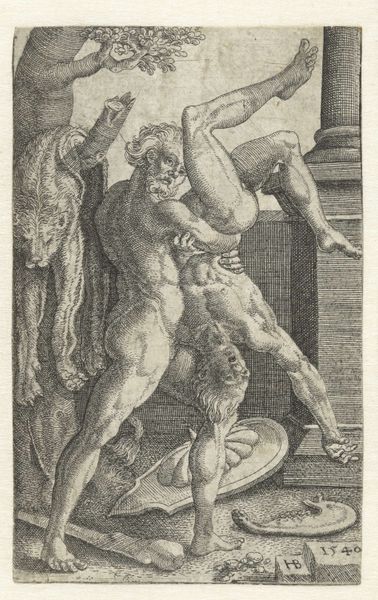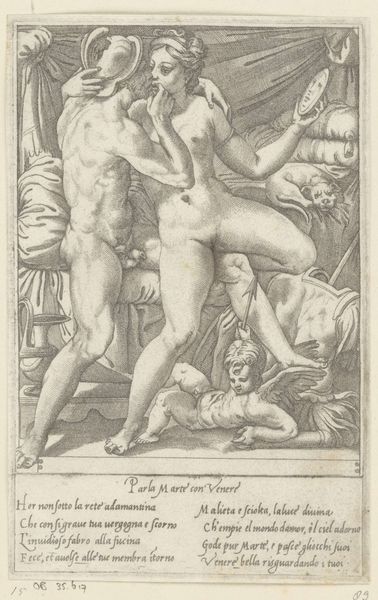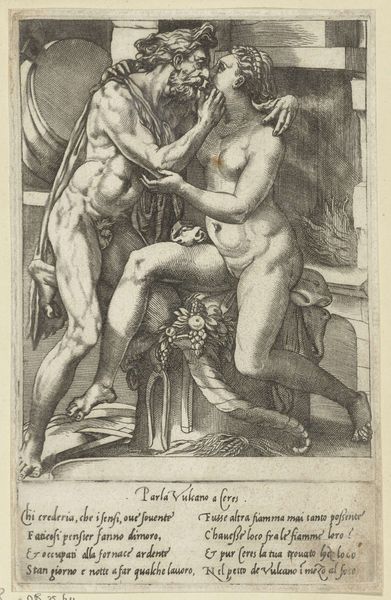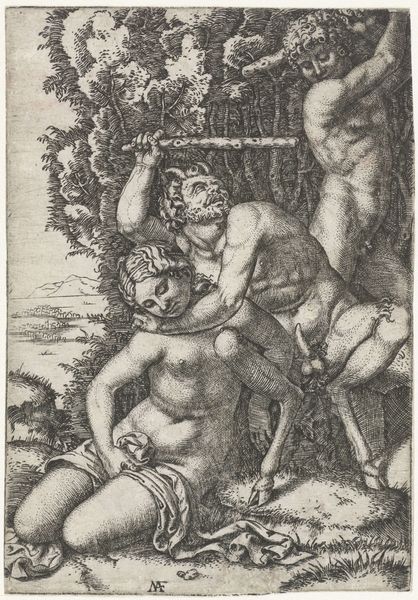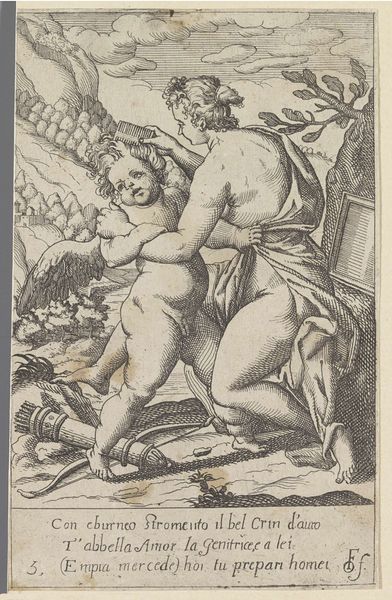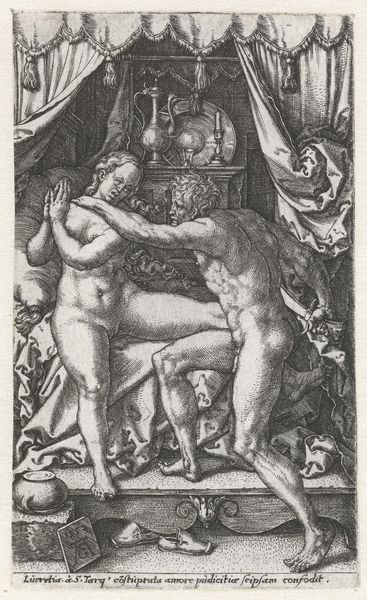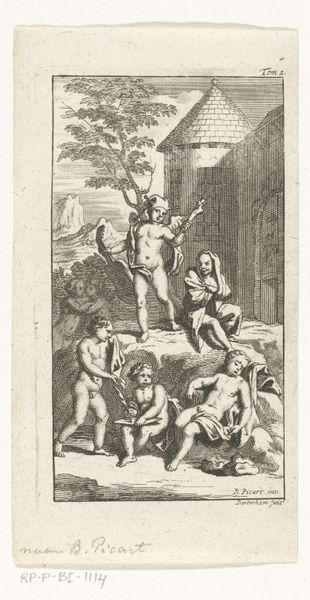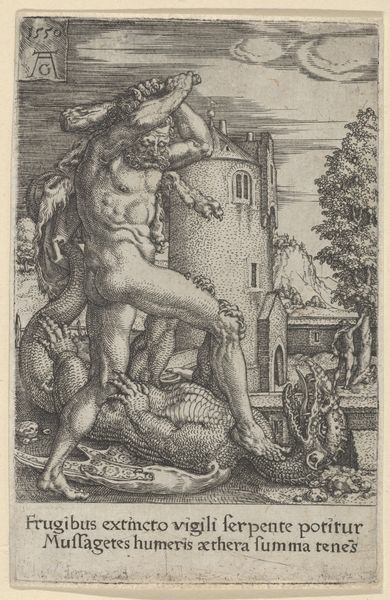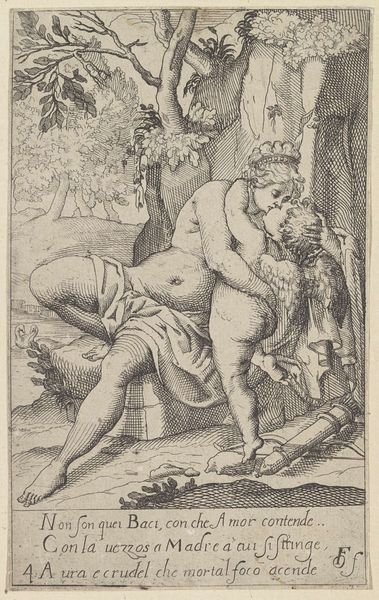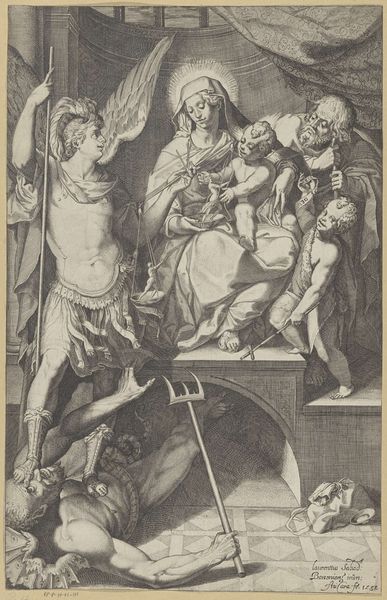
#
light pencil work
#
quirky sketch
#
pen sketch
#
pencil sketch
#
old engraving style
#
personal sketchbook
#
pen-ink sketch
#
pen work
#
sketchbook drawing
#
sketchbook art
Dimensions: height 92 mm, width 63 mm
Copyright: Rijks Museum: Open Domain
Editor: This is Hans Brosamer's "Laocoön en zijn twee zonen gedood door slangen," from 1538. It's a print, so likely an engraving or woodcut. The scene is obviously chaotic, with Laocoön and his sons being attacked by snakes. I’m curious – what can you tell me about this from a more historical perspective? Curator: Looking at this print, I see a direct engagement with the reproduction of classical narratives through a burgeoning printmaking industry. Consider the material itself – ink on paper – and its accessibility in 16th-century Europe. This wasn't a unique painting for a wealthy patron, but a replicable image available to a broader audience, shaping their understanding of classical antiquity. How does that altered accessibility change the perceived importance or sacredness of art through mass production? Editor: That’s interesting, because the printing press really did change the definition of art in the period. Curator: Precisely. We must think about the socio-economic conditions that fostered printmaking as both craft and art. The labor involved – the carving of the block or plate, the printing process itself – speaks volumes about the value placed on skilled manual work. And where were these prints consumed? What sort of impact did it have on cultural understanding to reproduce and see classical figures represented in this medium? What was traded in the region? Was this meant for personal or public consumption? These questions need answering. Editor: So you’re saying the value isn't just in the image itself, but in the materials, the process, and who had access to it? It becomes about the democratization of art through printing? Curator: Exactly! The mode of production is as important as the subject depicted. The materiality and circulation of the work shapes its meaning as it changed hands, and becomes a physical trace of cultural values. Editor: I never thought about it that way before; now, the technique becomes part of the cultural object and moment of its creation. Thanks!
Comments
No comments
Be the first to comment and join the conversation on the ultimate creative platform.
